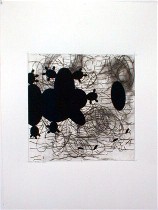 I finally got around the Gallery Joe’s brief show for this month–a three-weeker. Yikes, it’s closing Saturday.
I finally got around the Gallery Joe’s brief show for this month–a three-weeker. Yikes, it’s closing Saturday.
Four of the five artists showing are new to the gallery. Two of them were standouts, for me, but all of them had thought-provoking work.
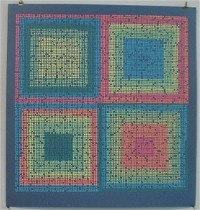
Xylor Jane is fascinated with numbers; the works in the show are patterns based on the Fibonacci number sequence. I’ve been looking at her name and wondering if she made it up, using the X and Y axes for inspiration, or if, having this unusual name inspired her to x-y axis love. Fortunately the work stands up without the explanation, and I especially enjoyed “The Sixty x 18” (shown, right).
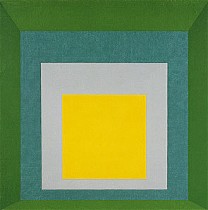 First of all, it was the only work in the show in living color. Second, it was based on a series of concentric squares. I began thinking of televisions, pixels and Joseph Albers (left, “Homage to the Square: Apparition”*)and his color theories. Thanks to the dark blue dots, I also thought of electric moving billboards like the one on top of the PGW building, with some of its lights missing, creating a kind of static-y void dancing across the surface.
First of all, it was the only work in the show in living color. Second, it was based on a series of concentric squares. I began thinking of televisions, pixels and Joseph Albers (left, “Homage to the Square: Apparition”*)and his color theories. Thanks to the dark blue dots, I also thought of electric moving billboards like the one on top of the PGW building, with some of its lights missing, creating a kind of static-y void dancing across the surface.
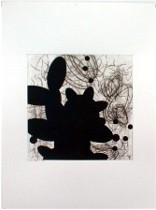
Clarence Morgan’s black and white drawings, a combo of stenciled-on shapes in black marker and hand-penciled marks were full of humor and the cosmos. I saw the Statue of Liberty as a balloon in “Fluid Tranquility” (shown here, right). And in “Stolen Moments,” (shown at top), balloons, blown up rubber gloves, breasts, cacti and black holes. The wonder of these pieces, to me, is that black blots, that usually come across as black holes, here come across as bulbous and voluminous.
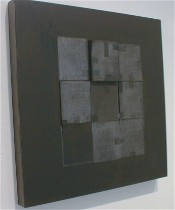
Annabel Daou’s grids had tactile and sculptural qualities, even though they seemed to be referring to the picture plane and frame. On chunks of wood, Daou layers paper, sometimes with layers of tape, sometimes painted or covered with graphite (“Broken,” left).
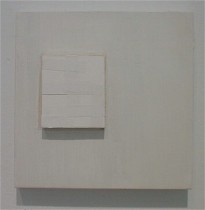
The work, with its deliberate imperfection and roughness also suggests skin, old book pages and layers of paint on buildings (“Quiet Move,” right).
Both Nicole Phunagrasamee Fein and Leonie Guyer (she’s the one who has shown at the gallery before) work as far away from deliberate imperfection and roughness as possible.
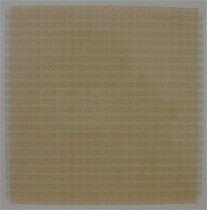
Fein’s “Iteration 4012TI” (left) layered a greem watercolor grid over an ochre one, created a woven and plaid fabric reference. “Iteration 4013MI” was an ochre tattersall plaid. And then there were the shirting stripes, ochre and black or ochre with black and white.
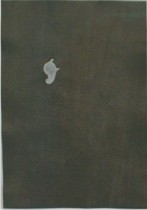
And Guyer’s tiny icons floating on either saturated-with-black-ink silk or delineated on white with just the faintest graphite line seemed modest, vulnerable and anthropomorphic, floating all alone in space.
* 2003 The Josef and Anni Albers Foundation/ Artists Rights Society (ARS), New York.









